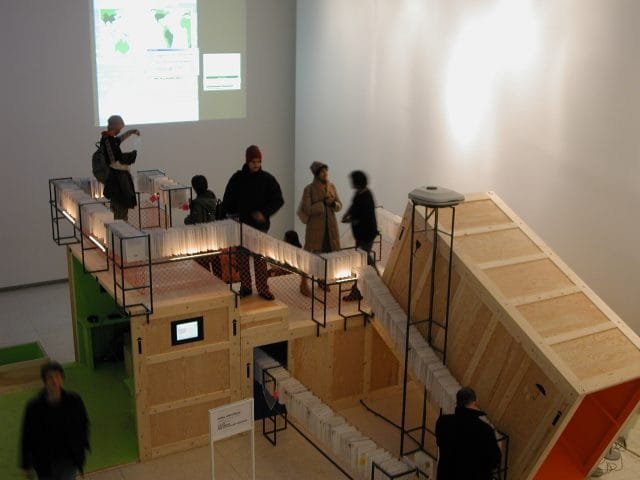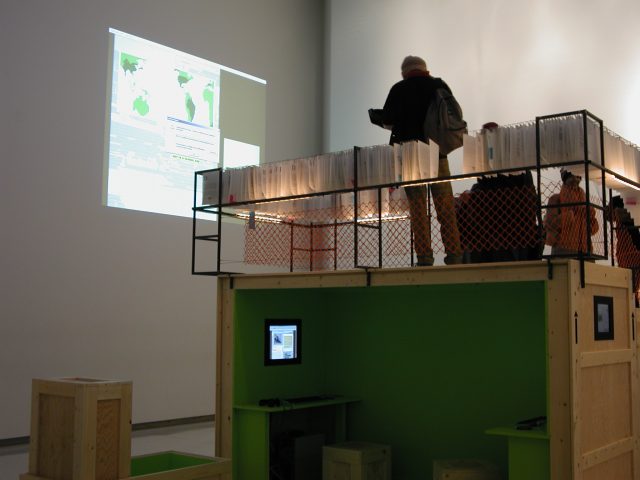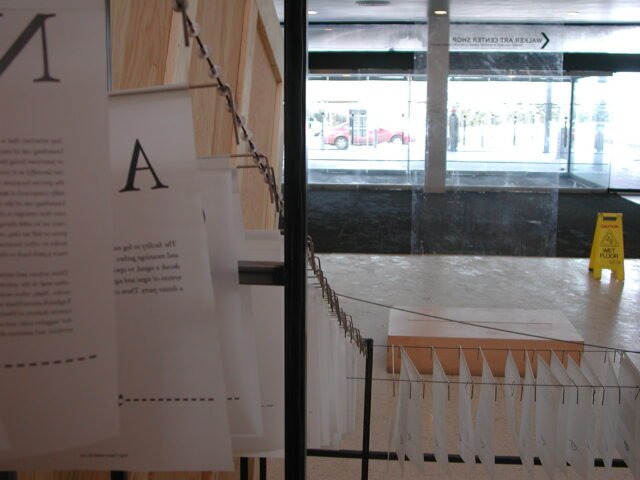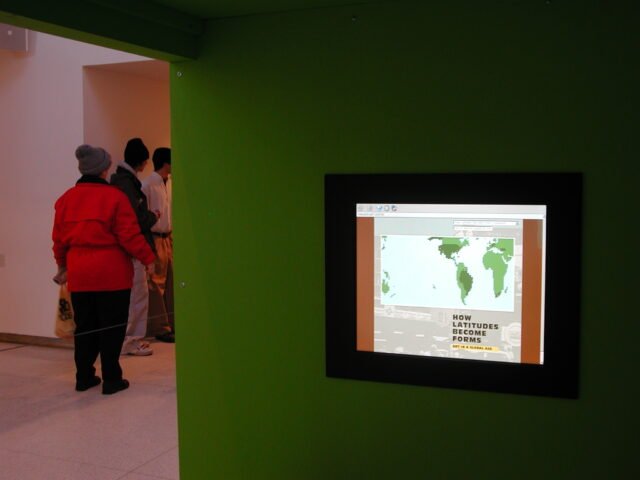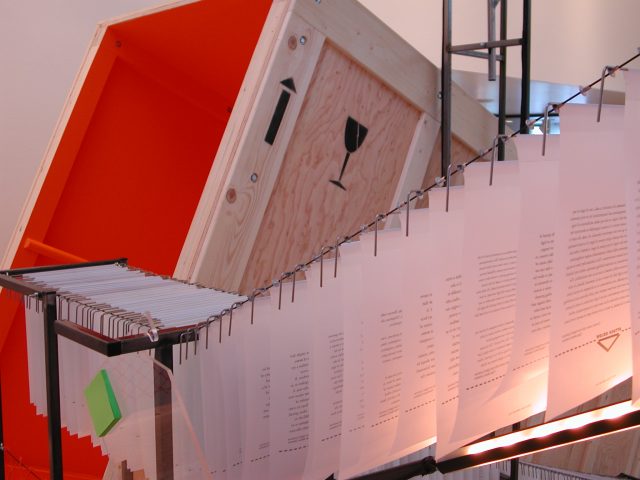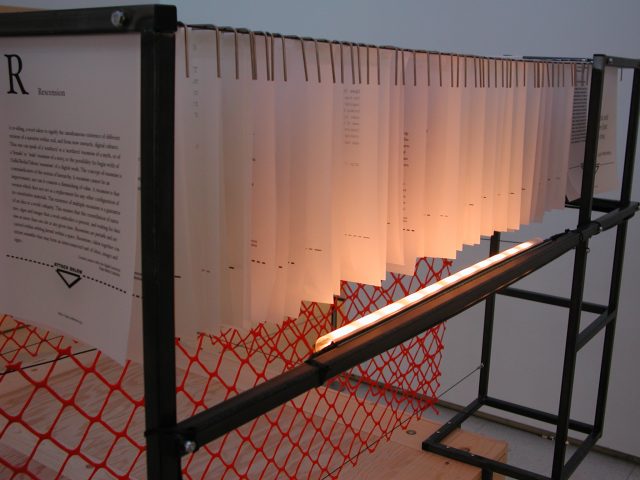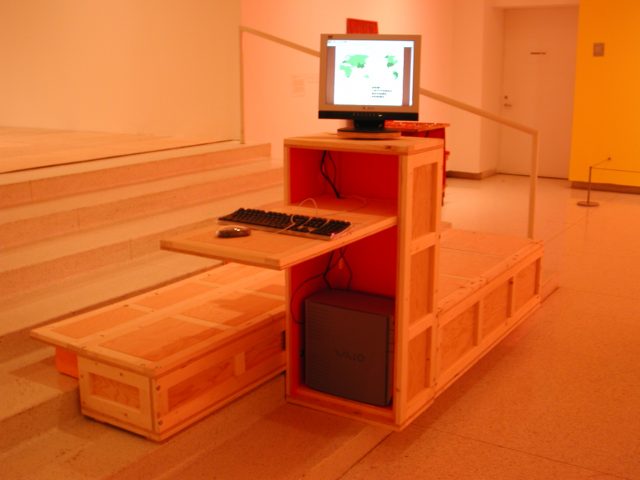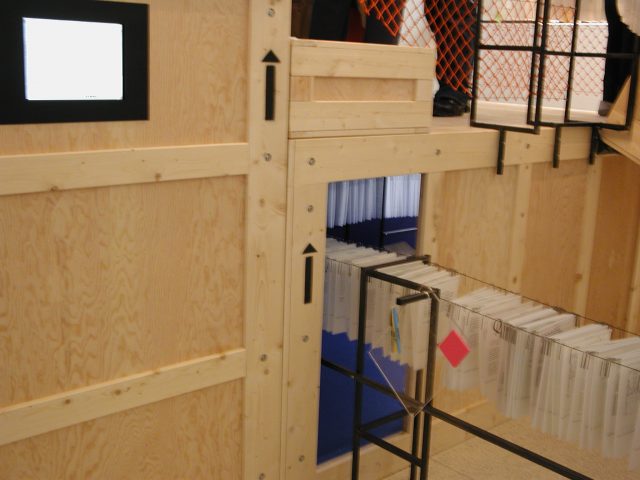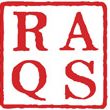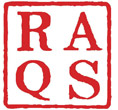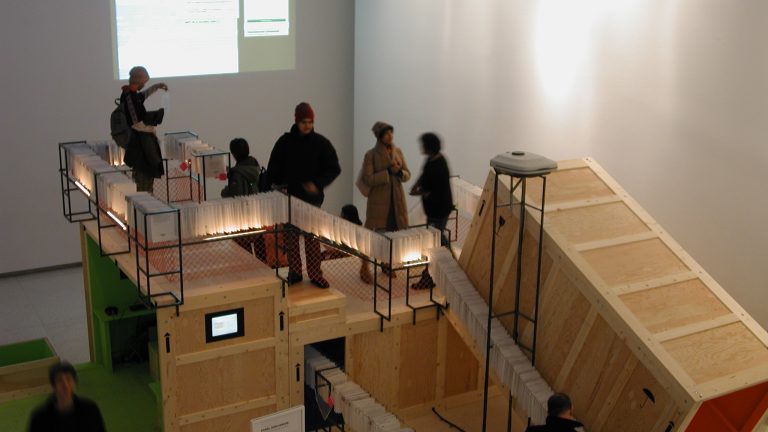TAS (Temporary Autonomous Sarai)
Shown at: ‘How Latitudes Become Forms’, Walker Art Center Minneapolis (2003)
Raqs Media Collective with Atelier BowWow (Tokyo)
Portable, multi-use structure made with packing crates for computers, projectors, paper, sound and people.
A hybrid between shelter and interface, Temporary Autonomous Sarai (TAS) is an installation that explores what it means to gather. Raqs along with Atelier BowWow designed a temporary structure for ‘How Latitudes Become Forms’, an exhibition commissioned by the Walker Art Center. Together, they assembled an installation that hosts network-based art by 14 artists from Brazil, China, India, Japan, South Africa, Turkey, and the United States. This also includes Raqs’ own work OPUS (Open Platform for Unlimited Signification).
Shown during Raqs’ early years, this work is a reflection of their interest in the materiality and forms of barriers and gateways that surround spaces and allow for identified entries and exits. In counterpoint to this, they would even explore online spaces, as spaces where different codes of co-habitation, may or may not be seen to apply. TAS revolves around Raqs’ thinking about the politics of cohabitation in spaces, both online and physical, which would articulate a scepticisim towards the anxiety of boundaries.
TAS is a fluid configuration of space, software, furniture, equipment and interaction possibilities, that echoes (in an architectural and material design sense) the ideas that animate the free “cultural” software initiatives. The structure, made of crates used to pack art objects in museums, snow fencing, plastic hangers, clips, A4 sized paper and post it notes, unpacks to form a refuge for people, computers, texts, signs made with pen and paper, and software that privileges itinerancy, flexibility of usage, and the possibility of role-shifts between user. TAS invokes the notion of the “user” as “producer”, and invite collaborative and sociable exchanges of images, sound and text, in a way that seeks to counter the “one passive viewer per machine” ethic of most net-based cultural interventions. The architecture breaks away from an individualistic experience of looking at a screen. It is a gesture towards Hakim Bey’s notion of a ‘Temporary Autonomous Zone’—an imagination of a space where the act of gathering becomes a site of exploration and experimentation, rather than one that is shaped by the protocols of dominant narratives.
Taking from the term “Sarai”, a word that has its roots in “Caravansarai”, TAS too, becomes a resting place where travellers across social divides found food, refuge, and company—an installation that foregrounds exchange and hospitality. Its porous, improvised architecture channels the convivial spirit of the original sarai, offering a temporary shelter for shared inquiry, connection, and cultural exchange.
Further, the TAS is seen as an essentially portable, nomadic construction, which can move easily, adapt to different exhibition spaces and requirements, and be quick and easy to assemble.
